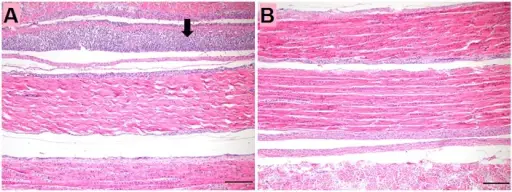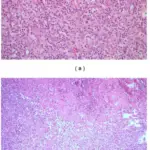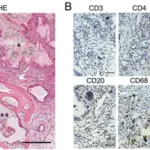Viral arthritis is inflammation of the joints from a viral infection.
What is the Pathology of Viral Arthritis?
The pathology of viral arthritis is:
-Etiology: The cause of viral arthritis is a viral infection, the most common of which includes parvovirus B19, chikungunya, and dengue.
-Genes involved: None.
-Pathogenesis: The sequence of events that lead to viral arthritis involves immune complex mediated antibodies being deposited at sites of viral infection or in the synovium which causes virus-induced autoimmunity.
-Histology: The histology associated with viral arthritis shows mixed inflammatory infiltrate, and hypertrophic synovial cells.
How does Viral Arthritis Present?
Patients with viral arthritis typically are males or females. They commonly have symmetrical small-joint involvement.
How is Viral Arthritis Diagnosed?
Viral arthritis is diagnosed using aspiration and radiologic findings.
How is Viral Arthritis Treated?
Viral arthritis is treated with simple analgesics or NSAIDs.
What is the Prognosis of Viral Arthritis?
The prognosis of viral arthritis is good. The disease is generally mild and self-limited, typically lasting no longer than three weeks.



